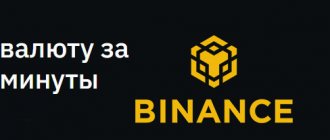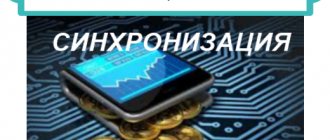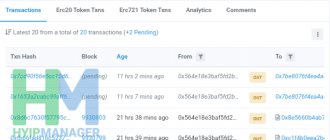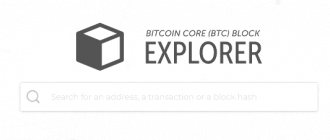A cryptocurrency transaction is an unencrypted sequence of symbols transmitted to the network, meaning the transfer of a certain amount to a specific address. Despite its uniqueness, each new encryption transaction has some connection with the previous one. The transaction itself is broadcast to the network without cryptographic encryption; only the start and end points of the transaction are encrypted. For a detailed study of the transaction code, there are various online services that allow you to “break down” the code into components for study - such services are useful for protection against various types of attackers.
Transaction processing is similar to payment processing in banking systems - from point “A” (sender) comes an identifier - a block of data that contains all the necessary data - destination address, recipient data (which can only be fully seen by the owner of the wallet). The transaction block will “travel” through key network nodes until it reaches the recipient - this will take on average ten to twenty minutes. After this, the recipient will be able to see the funds in his account.
What is an unconfirmed Bitcoin transaction?
To understand the concept of an unconfirmed transaction, let's first get acquainted with the general understanding of the Bitcoin transaction.
Any cryptocurrency operation is a record in a block chain (blockchain) that contains data:
- about the sender's address – Input;
- about the recipient's address – Output;
- about the amount sent – Amount.
When a transaction is initiated, the specified data is sent to the network and awaits entry into the block - confirmation from the miners. Only after this confirmation, the sender's balance is reduced and the recipient's balance is increased by the corresponding amount.
Most newcomers to the cryptocurrency world mistakenly believe that the only task of miners is the extraction of digital currency. In fact, their main task is to confirm transactions. They do this by mining blocks on the Bitcoin network, which weigh 1 MB. As soon as this volume is filled with information about transfers, the block is considered closed and confirmed.
If some transaction after launch did not receive a place in the next block of the blockchain network (was not added by miners), it is considered an unconfirmed Bitcoin transaction and ends up in the transaction queue. This can cause large delays in cryptocurrency transactions, which creates difficulties for traders conducting transactions with this coin.
Why is the transaction not confirmed?
The time it takes to complete transactions with cryptocurrency depends on many factors:
- network congestion at the time of transfer;
- transaction volume;
- payment priority.
Transaction participants pay commissions for conducting transactions on the blockchain network. When Bitcoin was not yet so popular, commissions were set and calculated automatically, and transactions were included in blocks instantly. With the growing demand for Bitcoin, competition for a place in the block has also increased. The fixed fee no longer met the needs of the cryptocurrency market, and traders began to independently determine the size of the commission.
Of course, first of all, miners choose operations in which the payment per transaction is larger. Therefore, the larger the commission size the user sets, the higher the chance that his transaction will be confirmed in the near future. In other words, the blocks include those transactions whose parties are willing to pay more.
Transactions with low rewards also have a chance to be processed, but users will have to wait. It is with such transactions that, as a rule, the problem of getting into the transaction queue arises.
There are special sites that help traders monitor network congestion and offer options for the optimal commission size. For example, the site btc.com. In the “unconfirmed transactions” you can see the current average cost of a byte, and the approximate time to confirm transactions for a given commission size.
How long to wait for Bitcoin transaction confirmation
In the blockchain, blocks are generated every 10 minutes, but due to great competition, on average, the transfer of bitcoins takes at least 60-90 minutes.
If there are many active users on the network with express transactions (increased commission), then those who want to save on commission fees may struggle for weeks to complete the transaction.
An operation that is in the transaction queue can either be approved within 72 hours or be cancelled. Then the transfer amount will return to the sender’s wallet, and the transaction will have to be completed again.
Why is the transaction not confirmed?
Most often, a transaction is not confirmed because the commission level set for it is too low. In this case, it can be processed for a very long time or even freeze, since the queue will never reach it.
Even with a normal fee level, the processing time for a payment can be long if there is too much load on the network. This may be due to any external events that affect user activity on the network. When too many transactions occur every minute, delays are inevitable.
How to speed up a transaction
The status of an unconfirmed transaction does not mean that it did not take place or that some kind of failure occurred. This only means that you will have to wait some time or perform the operation again.
There are various options to speed up or “push” transaction confirmation.
Double Spend
The main and simplest method to solve the transaction queue problem is double spending. Its essence lies in the fact that the performed operation is performed again, but with an adequate commission, and covers the primary one.
Important : Do not worry that both operations will take place, that is, a double spend will occur literally. According to the rules of the cryptocurrency system, when making such transactions, only those that have more favorable conditions for miners are made. Less profitable analogues of operations are subject to destruction.
The use of this method depends on the type of wallet used for storing and transactions with coins. Let's take the Bitcoin-Core wallet as an example.
- Make sure the transaction is truly unconfirmed. There are special services for this, which you will learn about below.
- From the directory where the Bitcoin Core installation files are stored, remove the “mempool.dat” file. For example, move it to another folder.
- Close the wallet program and restart it. During startup, enter “zapwalletettxes” at the command prompt.
- Carry out the transaction again, specifying a higher commission amount. It is important to configure the parameters of the transaction as similar as possible in comparison with the operation that was not successful.
- Wait for the operation to complete. Bitcoin transfers should now take place faster.
For other crypto wallets the approach is similar. The main differences can only be in the names of the commands. There is a great feature in the Electrum wallet. “replace-by-fee” button allows you to resend bitcoins with an increased commission.
Child Pays for Parents
Child Pays for Parents (CPFP), literally “children pay for parents,” is one of the most popular methods of “pushing” payments. Its essence is that the sender of bitcoins creates another transaction using the “change” from an unconfirmed payment.
Change is the funds that should remain in the account after the problematic transaction has been completed. It is important that the amount is enough for both the old and the new transaction.
The transaction party creates a new transaction with change that was “conditionally” received from another, not yet confirmed transaction. Sets an increased commission, which will be distributed over two operations. The miner will notice the high fees and confirm the transaction.
Coins can be sent to any address. They often use their own. Let's look at the use of CPFP using the Bitcoin Core wallet as an example.
- Go to the section with settings and parameters (Settings – Options).
- Go to the “Wallet” category and put o (Manage inputs). Here, enable permission to spend unconfirmed change – “Spend unconfirmed change”.
- Click on "Submit".
- Go to the “Inputs” section and check the box next to the amount you are interested in.
- Indicate your storage address in the “Recipient Address” line.
- Click OK.
- Enter the transfer amount and click on the checkbox next to “Subtract fee from amount”.
- Check the custom commission per kilobyte – “custom, per kilobyte”. Don't forget to note that the commission is calculated for two transactions.
- Complete the transaction to send bitcoins.
Important: The method requires additional costs - a commission for the second operation, and is supported by a small number of miner pools.
Using accelerators
Another way to speed up the confirmation of a Bitcoin transaction is to turn to mining pools for help. The most popular “provider” of such a service is the ViaBTC pool.
- Go to the accelerator website.
- Paste the transaction ID into the line. The commission for an accelerated transaction must be no lower than 0.0001 BTC/KB.
- Click on "Speed Up Free".
There is also a paid acceleration feature. To do this you need to register on the site. The service commission is paid in Bitcoin Cash.
The ViaBTC pool has 7% capacity, so turning to it for help can be justified. After leaving the request, the pool sets the transaction to a higher priority. However, the service is designed for no more than 100 transactions per hour and is often heavily overloaded.
Other similar services: AntPool pool website, acceleration bot in Telegram - @FastTXbot.
conclusions
The advantages of blockchain transactions include:
- Transparency and absence of intermediaries.
- Decentralization and independence from the traditional financial system.
- Availability - this opportunity can be used by all Bitcoin owners.
- Inability to change distributed registry data.
- Security against cyber attacks.
Also, the advantages of blockchain include low commissions and high speed. But at the moment this is not the case.
The confirmation speed depends on the commission, network load and amount. To speed up the process, you have to use various tricks, wallet functions and additional services. Bitcoin has almost lost two of its advantages, but still remains a means of payment capable of changing the financial industry.
Segregated Witness
If all the methods described above were associated with the manipulation of transaction fees, then Segregated Witness or SegWit works with blockchain scalability.
SegWit is a soft fork from the developers of the Bitcoin Core wallet, which, by optimizing the size of transactions, solves the problem of block overcrowding, and, consequently, the speed of transaction confirmation.
A soft fork is something that involves a change in the operation code without affecting the core software. It changes the block authentication rules.
Segregated Witness eliminates signatures from the transaction structure, which take up about 47% of the transaction, resulting in a lighter transaction and therefore almost twice as many transactions fit into a block limited to 1 MB. The signatures are separated into a separate structure called a “separate witness.”
The SegWit solution was included in the 2016 Bitcoin Core 0.13.1 client. In 2022, Segregated Witn was activated on the Litecoin network, as well as on less popular tokens: Groestlcoin, Syscoin, DigiByte, Monacoin, Vertcoin.
Confirmation problems
Many people are concerned about the question of what an unconfirmed blockchain transaction means. As mentioned above, these are considered transactions that are not added to the block. This condition can last for several hours, and if the network is heavily loaded, it can last for days.
There is a myth on the Internet about the expiration of the transaction confirmation period. But there is no such thing. It is theoretically possible that the transfer will remain unconfirmed for several years, and then will still be processed and the payment will go through.
Some wallets have an expiration date. For example, you send cryptocurrency, but it is not included in the block. After a few days (the period depends on the wallet), the transaction is deleted.
How to cancel an unconfirmed Bitcoin transaction
If a transaction has received at least 1 confirmation, it is impossible to cancel it and return the coins.
How to cancel a Bitcoin transfer in a Bitcoin Core wallet:
- Make sure that your transaction is not actually confirmed through a special service.
- Launch your wallet. Make a series of transitions: “Help” - “Debug Window” - “Console”.
- Enter the command “walletpassphrase PASSWORD”.
- Enter the command "dumpprivkey ADDRESS" (the address that was used for the operation). You will receive a private key. Save it in a separate file and under no circumstances pass it on to third parties.
- Find the “wallet.dat” file in your wallet components folder, rename it, and move it to another location.
- Exit your account and delete your wallet.
- Restart the program, it will not find your wallet and will create a new empty wallet.
- Return to the Console menu. Enter the command “importprivkey PRIVATE KEY”. The scan will begin and will take approximately 60 minutes.
- Check your account. Unconfirmed transactions should be deleted and blocked money will be available again.
The method will not work: (1) if the user uses cloud storage to save information about transfers; (2) if the miners managed to process the unconfirmed operation.
Number of unconfirmed transactions
We noted earlier that there are special services where you can check the status of bitcoin transfers, the approximate time of transactions, and calculate the level of a successful commission. For example, these are the sites:
- blockchain.info;
- bitaps;
- sochain.com;
- btc.com.
The most popular service is blockchain.info. In order to use it, just write the ID of your transaction in the search engine on the main page. After verification, you will see “ Confirmations” in Blockchain (Transaction passed) or the inscription “ Unconfirmed Transaction ” (operation not confirmed).
Features of transactions on the blockchain
A blockchain transaction is a way to transfer funds between users. The creator of the distributed ledger, Satoshi Nakamoto, developed it taking into account two shortcomings of the financial system:
- Slow - international transfers can take up to five days. Banks are closed on weekends.
- A large number of intermediaries.
Nakamoto hoped that payments would be faster on the blockchain. Miners check and confirm them.
The process itself is called mining. The participant, using special equipment, processes transactions and records them in a block. To do this, you need to solve a special mathematical problem. The one who is the first to cope with it will receive a certain amount of cryptocurrency.
Confirmation is needed to prevent double spending of funds - so that the user does not spend the same coins twice. To establish the authenticity of a transaction, it is checked for compliance with the blockchain. Data written to a distributed registry cannot be changed or deleted because it is stored on thousands of nodes simultaneously.
The user can look at the status of the transaction using special services - “block explorers ”
). Popular options are Blockchain.info or Blockexplorer.com. At the top of the page there is a search engine where you can specify the block number, hash and other information. The service will then display the related information.
Indicators of one of the first thousand blocks, probably mined by Satoshi Nakamoto











